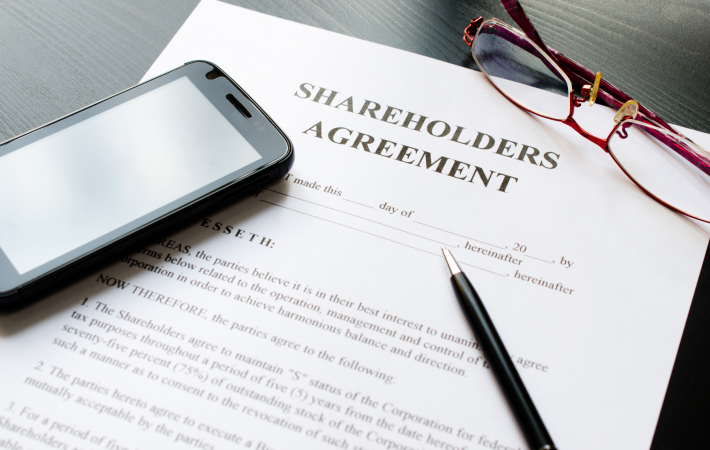
When going into business with other people, it is important to set expectations and have a clear plan on how to approach the management of the company. For this reason, a shareholders’ agreement is an extremely useful document for any business start-up and new company.
A shareholders’ agreement is a private arrangement between the shareholders of a company. It typically describes how the company will be managed, sets out the ownership of shares, and outlines the shareholders’ rights.
The shareholders’ agreement should not be confused with or used in place of the articles of association. Under the Companies Act 2006, every limited company is legally required to have articles of association, which dictate the rules of how the company is governed. This is a public document, which is registered and visible on Companies House.
In contrast, a shareholders’ agreement is a private contract, and it is not a compulsory document. Unlike the articles of association, there are no prescribed provisions, meaning the agreement can contain whatever the shareholders wish (within reason).
Shareholders’ agreements are often best used in combination with the articles of association. These agreements are used as a safeguard to give protection to shareholders and can give further information on how to deal with certain issues. The agreement usually provides for what happens ‘when things go wrong’. Without this agreement, it can be difficult to know how to handle disputes and disagreements between shareholders.
Whilst, there are no set rules on what to include, here are our 5 essentials for shareholders’ agreements:
Most agreements outline how many shares each party owns and the classes of shares. The agreement will also outline which shareholders will act as directors and their roles within the business.
The shareholders’ agreement should outline how often the board will meet, and how shareholders can make decisions to manage the business. Most importantly, it should outline what will happen if a deadlock occurs and how disagreements will be resolved.
For people with minority shares, they can sometimes find they have little to no influence on the decisions of the company. The agreement should set out how they will be protected against majority decisions, such as by requiring unanimity or special majorities.
Guidelines on shareholders selling, transferring, and purchasing shares will typically be included in the agreement. There will usually by restrictions and pre-emptive rights (i.e. right of first refusal) placed on the sale and transfer of shares.
The agreement should outline what will happen when a shareholder leaves, retires, or dies. There may also be certain conditions imposed on the shareholder themselves when they simply want to leave. For example, the agreement may outline restrictions on setting up a competing company.
Taking early advice is essential when it comes to putting shareholder agreements in place. Get in touch with our corporate and commercial team, who will help create the foundations for the long-term success of your new company.

Contact Holly to discuss this further.